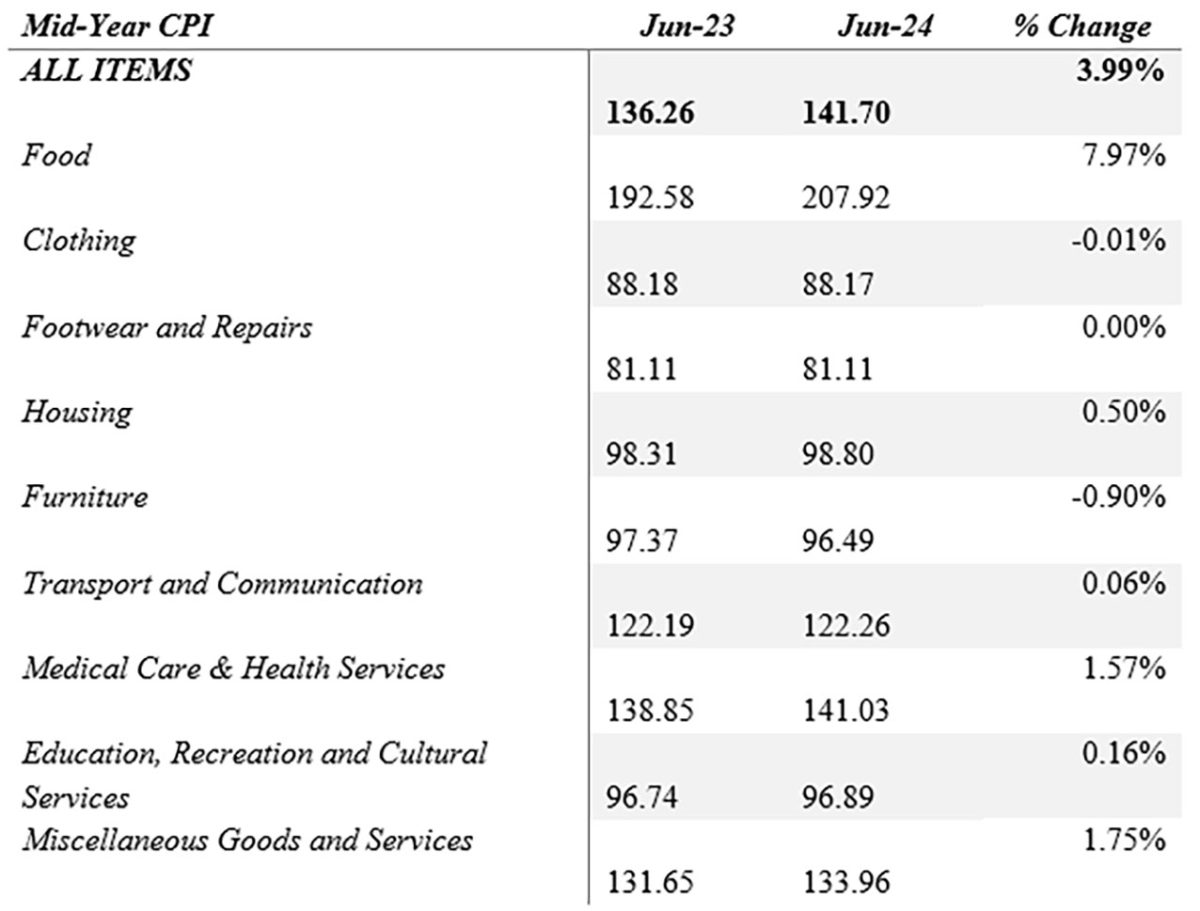Dear Editor,
Reference is made to a letter by Mr. GHK Lall in the Stabroek News edition of September 3, 2024, captioned “that 1.6% CPI stat that flies in the face of every market experience by many Guyanese”. Only recently I dedicated a technical article explaining and demonstrating how to correctly interpret and analyze the Consumer Price Index (CPI). In the case of GHK’s contentions, the supposedly CFA trained financial analyst interpretation of the index was fundamentally flawed and incorrect.
The overall index showed an increase by 1.6% as of June 2024, when compared to the end of year 2023. However, the corresponding period ought to have been half year 2023 with the corresponding half year of 2024. In this case the inflation rate for the half year period June 2024, when compared to the corresponding period in 2023, was 4%. Moreover, GHK went onto to argue that the 1.6% cannot be accurate by his juxtaposition with the rise in food prices. GHK failed to appreciate and/or demonstrate that the CPI is made up of several sub-categories.
As shown in the table above, food prices increased by almost 8% when compared to the corresponding period in June 2023. Conversely, footwear and repairs, clothing, housing, furniture, transport, and communication did not record any increases. This explains why the overall index has a lower percentage change as opposed to the sub-categories, such as food prices, accounting for the largest increase in the CPI.
One can also easily relate as to why housing, transport and communication did not experience increase in prices. This outturn is on account of deliberate government intervention and public policies. Housing, for example, is heavily incentivized in multiple ways, including interest free loans to first-time, low-income home owners. In the telecommunications industry, prices have fallen due to Government’s liberalization of the sector, thereby ramping up competition and enabling new entrants into the market, inter alia, stimulating competition. Additionally, VAT on data and other electronic supplies for mobile devices were removed.
Similarly, in the public transportation sector, government has heavily subsidized fuel cost by waiving the 50% excise tax on fuel imports. Altogether, the removal of this tax amounted to a countrywide fuel subsidy of over $80 billion annually, hence, transportation prices have not shown any increases over this period.
Sincerely,
Joel Bhagwandin

